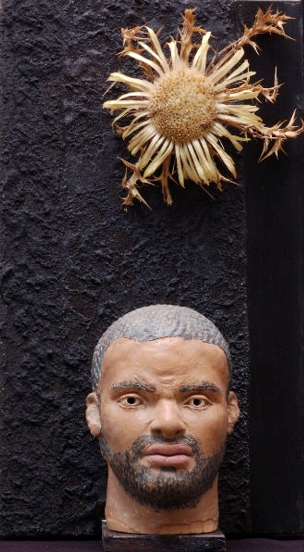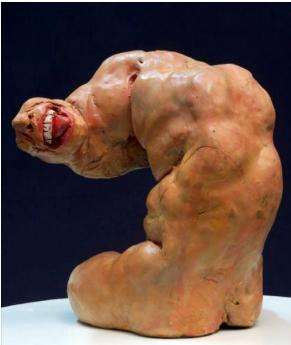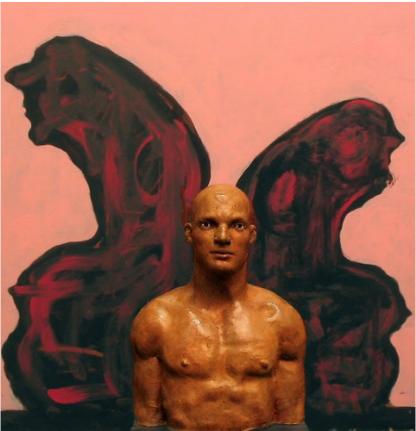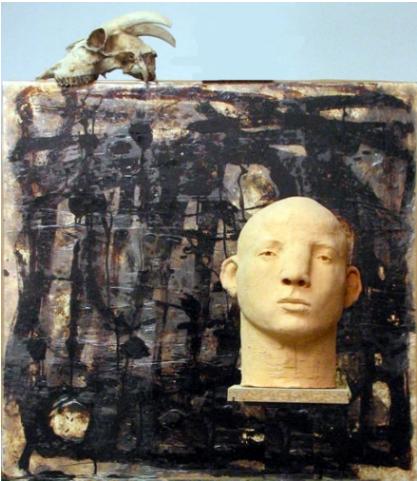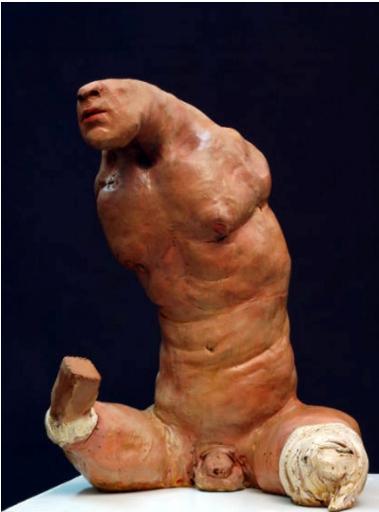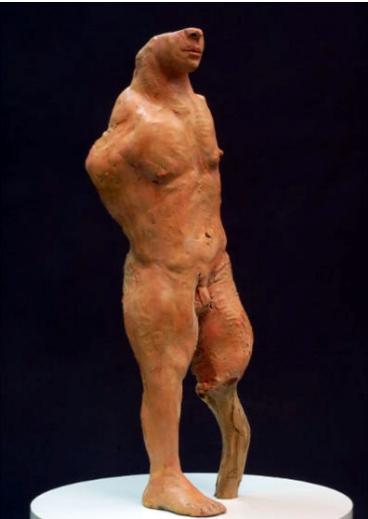Look at your heads, first. You made tons of them - establishing yourself, maybe, as a portrait artist? I could understand this kind of obsession. But your heads don't portray anyone. Though, sometimes, you draw inspiration from pictures, soon your imagination takes the lead. Your heads are invented: not less strikingly real. Real but not realistic, if that makes sense.
Should I infer that - since they portray no one - these are reiterated attempts at self-portraits, metaphorical as you wish? Not at all. These are not replicas of yourself. Whose are these heads, then? Whom do they resemble? If the portrayed subjects are abstractions, where does the abstraction lie? Is it a social commentary? Does it tackle race? Is it, indeed, an ethical or psychological search? Do the faces express feelings, emotions?
Let me address this last one. Most faces are impassive. Some hint - barely - at things so initial, so seedy, I must think they are joking. I believe I spotted a shade of worry here, a halo of authority there. But they are unconvincing poses, promptly denied by the next head - that goes back to the generic features characterizing them all.
Well… they are not characters either. No, not even those who grew a bit from the neck down, sporting clothes suggesting a context, an affiliation. Working overalls for example. Or a bow tie. A turtleneck, a dark suit. Even those, I swear, are not characters. Their expression is a mixture of thoughtfulness and astonishment. It's a kind of serenity, so vague it becomes melancholia. It's a dullness that can pass for wisdom - an awareness so discrete, it can pass for naivety.
If one thinks this uniformity creates boredom, one his wrong. It doesn't. First of all, the lack of individuality brings nuances in focus. The diffuse similarity (this plain, understated wonderment) exasperates variations. Through the subtle changes - between a face and the next - we are compelled to track a plot, a development. Leading to a secret's final revelation.
That's hopeless. The secret is there, of course, but well kept. All of these folks are mute. How do I know? Aren't all statues mute, by the way? No. Look at their lips. Many of them - by classic, romantic, by impressionist or expressionist artists - breath. Open or close, they betray the passage of air: that means sound, that you hear it or not. That means language. While these folks have very tight lips. Either sealed (I believe so), or inert, unused to articulation. These lips have given up, long ago.


